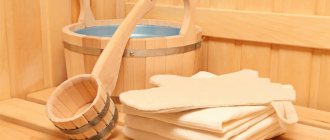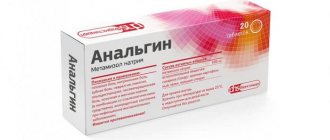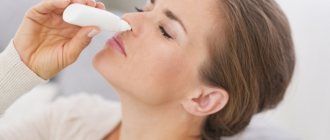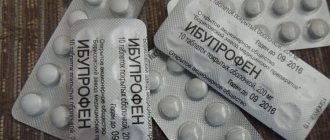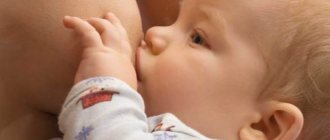How to measure temperature correctly while breastfeeding?
If you measure your temperature under your armpit, you will get an unreliable result. When breastfeeding, the thermometer always reads more than 37 °C. This is normal, so to obtain adequate and true values, place the thermometer in the crook of your elbow. Simply hold the thermometer with your hand bent. In the maternity hospital they measure in the inguinal fold or even in the mouth. True, the temperature in the mouth is also normally higher than 37 °C.
If you suspect you have breast problems, take the temperature under both armpits. It may vary, but if it is higher than 37.6 °C, we can talk about some kind of disease.
Temperature at hot water
How to reduce fever while breastfeeding
Before you grab medicine to lower your temperature, you should measure it correctly. During the period of breastfeeding, the temperature in the armpit is much higher than it actually is, so the thermometer should be placed in the area of the elbow bend. Only then can the mother’s condition be determined with the greatest accuracy. You need to resort to the use of antipyretics when it causes discomfort or exceeds the 38.5 mark on the measuring device. In other cases, it is better not to prevent the body from fighting the disease alone.
Is it possible to breastfeed at a fever?
This is a separate issue, since previously the mother was taken away from the baby and forbidden to breastfeed. Now everything has changed, and in most cases, if the mother does not take any serious medications, feeding the baby is not only possible, but necessary.
If the mother has ARVI, there is no need to stop lactation; it is enough to wear a mask and try to spend less time with the child so as not to infect him. You can express milk and give it to your baby from a bottle. In case of lactostasis, that is, blockage of the milk ducts, there is no need to stop feeding. The baby will remove milk from the inflamed area better than any breast pump. Many mothers are afraid of the salty taste of milk when they have lumps in the breast. This is as it should be, because at the same time sodium salts approach the breast tissue, and the taste of the milk changes.
The salty taste of milk has nothing to do with the appearance of pus in it. If the milk is of normal color and has a salty taste, you can feed the baby. Moreover, it is better to do this only from the sore breast. Milk is expressed from a healthy mammary gland.
Lactostasis and feeding
How to raise your temperature while breastfeeding?
It is advisable not to prescribe anything to yourself. To raise your temperature, you need to get a good night's sleep and rest. After all, the cause of low temperature is overwork. In addition, it is worth taking a hemoglobin test. If the temperature is caused by a low hemoglobin concentration, take iron supplements, for example Maltofer. It is safe and can be taken while breastfeeding. A diet to increase hemoglobin is welcome. Eat buckwheat porridge, boiled beet liver and baked apples.
Low lactation temperature
How to lower your temperature while breastfeeding?
If the temperature appears suddenly, you can take Ibufen or Paracetamol. These medications are approved even for children, so there is no need to stop feeding your child. Many mothers refuse to take any medications for breastfeeding; this is wrong, as you will make things worse for yourself and your child.
You cannot take any antibiotics on your own. They may harm the baby. Any antibacterial and antiviral drugs can only be prescribed by a doctor.
Means for reducing fever
How to reduce fever while breastfeeding?
Many drugs can worsen both the quality of breast milk and the general condition of a woman. Therefore, most young mothers are interested in how to reduce fever while breastfeeding without compromising their health. In such cases, it is recommended to eliminate the unpleasant symptoms of the disease using simple folk remedies and herbal medicines.
Do not forget that the temperature up to 38.5 °C cannot be brought down with medications. At this time, the body tries to get rid of the infection on its own. To speed up the healing process, try to spend more time in bed, and do not forget to ventilate the room well.
If the thermometer reading has exceeded the permissible level, standard treatment methods can be used. The most common means of reducing fever is paracetamol. Experienced doctors claim that these tablets are absolutely safe for nursing mothers. It is better to avoid such well-known drugs as aspirin and ibuprofen, as they can cause an allergic reaction in infants.
A high temperature during breastfeeding can be brought down using ordinary vinegar rubs. Dilute vinegar and water in a large glass in a 50/50 ratio, dip a gauze cloth into the liquid and wipe the entire body with it. Rubdowns will be more effective if you repeat them several times at intervals of 10 minutes. 4.5 out of 5 (59 votes)
What do chills and fever indicate during breastfeeding?
First you need to determine what caused the temperature. If this is lactostasis, then you will feel characteristic chest pain and tightness. The chest will seem to “burn.”
- To reduce the temperature, just take a warm shower and massage your breasts, it can be very painful, but be patient, otherwise you risk missing a lump. After this, press on the mammary gland in the direction from the armpit to the nipple
- There is no need to press on the areola. You must release the distant lobules, which are the worst to be emptied
- After this, the cabbage leaf is beaten with a hoe and cooled in the refrigerator. Place this compress on your chest
- We constantly place the baby on the sore breast. If it is very bad, you can take Ibufen or Paracetamol
- If you do not feel pain in the chest, the glands are not hot and not stone-like, then most likely the reason is not lactation. Pay attention to your general health. If you have a headache, aching back and muscle weakness, then most likely you have a cold. This is a banal ARVI
- If you have a stomach ache or increased discharge after childbirth, call an ambulance immediately
Chills during breastfeeding
Low temperature during breastfeeding, causes
The temperature must be brought down if it is above 38.4. This can be done with medications that are not contraindicated for hepatitis B:
- paracetamol;
- Nurofen;
- Ibuprom.
Before using medications, be sure to consult a doctor. Only a specialist will prescribe treatment and indicate the required dosage of drugs.
When breastfeeding, a woman is recommended to bring down her temperature with the help of folk remedies, and only if they do not help, use medications.
One of the most effective ways to bring down a fever is a cold compress. You can apply a special rubber heating pad filled with ice water to your forehead. Or wet a towel folded several times with a special solution (water and 9% vinegar in a 1:1 ratio).
Various decoctions and infusions will help cope with the fever:
- cranberry juice;
- rosehip decoction;
- red currant juice.
Use folk remedies for treatment with caution, as the child may have allergies.
If the temperature is high, you should not stop feeding. Babies have not developed their own immunity, so mother’s milk containing antibodies helps them avoid getting sick or recover faster. And only for certain diseases is breastfeeding strictly contraindicated.
Body temperature is measured in the armpit. The safest way to do this is with a modern electronic thermometer, which should be held for some time after the beep to be sure. It is better to watch the screen and take it out only when the mark stops changing. This indicator will be more reliable.
This is exactly the method that was used in the department of postpartum complications, which I visited after my first birth. If the temperature is not due to the chest, then it “rises” in the elbow bend.
If a nursing mother immediately after feeding or pumping measures her armpit temperature, she will find that it is higher than normal. Typically, you can see values on the thermometer in the range of 37.0-37.4 ° C. This is absolutely normal, since after feeding, the muscles release heat, in addition, the temperature of the milk in the ducts is above 37 ° C. Accordingly, to obtain reliable results, doctors do not recommend measuring the temperature under the armpit.
Temperature and lactation
If you measure your temperature under your armpit, you will get an unreliable result. When breastfeeding, the thermometer always reads more than 37 °C. This is normal, so to obtain adequate and true values, place the thermometer in the crook of your elbow. Simply hold the thermometer with your hand bent. In the maternity hospital they measure in the inguinal fold or even in the mouth. True, the temperature in the mouth is also normally higher than 37 °C.
If you suspect you have breast problems, take the temperature under both armpits. It may vary, but if it is higher than 37.6 °C, we can talk about some kind of disease.
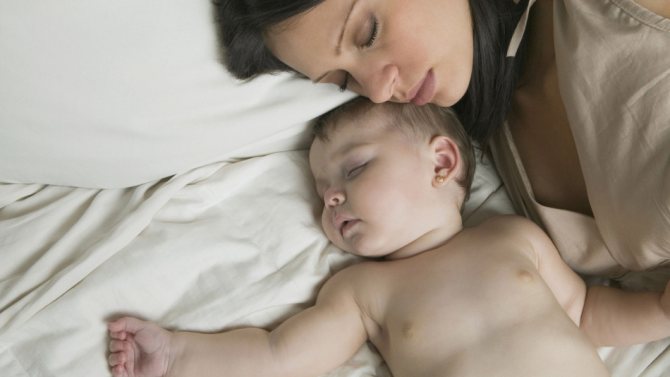
Temperature at hot water
If the temperature appears suddenly, you can take Ibufen or Paracetamol. These medications are approved even for children, so there is no need to stop feeding your child. Many mothers refuse to take any medications for breastfeeding; this is wrong, as you will make things worse for yourself and your child.
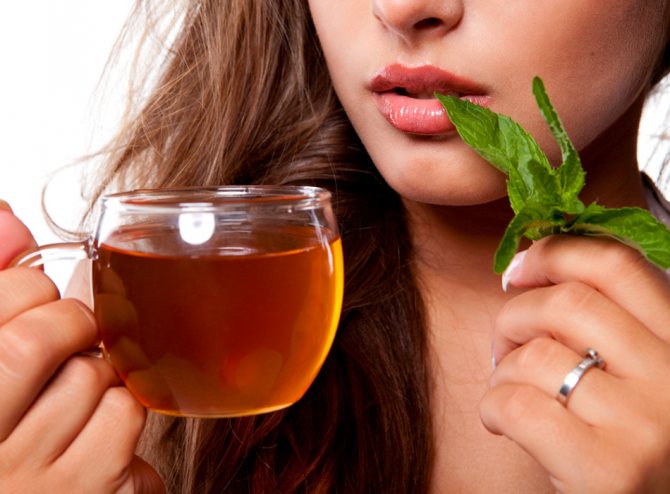
Means for reducing fever
First you need to determine what caused the temperature. If this is lactostasis, then you will feel characteristic chest pain and tightness. The chest will seem to “burn.”
- To reduce the temperature, just take a warm shower and massage your breasts, it can be very painful, but be patient, otherwise you risk missing a lump. After this, press on the mammary gland in the direction from the armpit to the nipple
- There is no need to press on the areola. You must release the distant lobules, which are the worst to be emptied
- After this, the cabbage leaf is beaten with a hoe and cooled in the refrigerator. Place this compress on your chest
- We constantly place the baby on the sore breast. If it is very bad, you can take Ibufen or Paracetamol
- If you do not feel pain in the chest, the glands are not hot and not stone-like, then most likely the reason is not lactation. Pay attention to your general health. If you have a headache, aching back and muscle weakness, then most likely you have a cold. This is a banal ARVI
- If you have a stomach ache or increased discharge after childbirth, call an ambulance immediately

A very high temperature during breastfeeding can be triggered by purulent mastitis. This disease is accompanied by chest pain. When you press on the gland, you feel pain. Redness and dents after pressure do not resolve for a long time.
- Be sure to taste the milk and evaluate its color. If it turns greenish and has an unpleasant, purulent taste, express it and throw it away. You can't feed it to your baby
- For mastitis, antibiotics are prescribed; in advanced cases, surgery may be necessary.
Chills during breastfeeding
High fever while breastfeeding
A very high temperature during breastfeeding can be caused by purulent mastitis. This disease is accompanied by chest pain. When you press on the gland, you feel pain. Redness and dents after pressure do not resolve for a long time.
- Be sure to taste the milk and evaluate its color. If it turns greenish and has an unpleasant, purulent taste, express it and throw it away. You can't feed it to your baby
- For mastitis, antibiotics are prescribed; in advanced cases, surgery may be necessary.
Chills during breastfeeding
Temperature during breastfeeding

05/22/2015 Breastfeeding Each of us knows what exactly needs to be done at the first sign of a cold. But when chills appear and the temperature rises during breastfeeding, this inevitably raises fears of harming the baby. Young mothers are at a loss as to how to help their body as soon as possible and are looking for the cause of the elevated temperature.
Elevated thermometer readings may indicate that a nursing mother has a cold, but there are other reasons, which a qualified specialist will help you determine. Temperature fluctuations can occur in the first weeks after birth, but let your doctor decide how dangerous they are.
If a nursing mother has not visited public institutions with large crowds of people in the near future, then postpartum inflammatory diseases or exacerbation of chronic diseases should not be ruled out.
Self-medication in such cases is dangerous, as it can worsen the problem.
One of the reasons may be lactation mastitis, when inflammation in the mammary glands is observed against the background of general weakness of the body with an increase in temperature. This disease cannot be treated without taking antibiotics.
How to reduce a high temperature while breastfeeding?
Information about medications can be found above. But if you don't want to take anything, try lowering your temperature without medication:
- If you feel very hot, take off your clothes. Place a cloth soaked in vinegar solution on your head and calves. You can simply wipe yourself with cold water
- If you have chills and are very cold, dress warmly and lie under a warm blanket. You need to sweat. To do this, drink warm tea
- Drink linden and chamomile tea. You need to drink a lot of liquid
How to reduce a high temperature while breastfeeding: tips
- Do not stop breastfeeding when the temperature rises. Many mothers believe that milk burns out at high temperatures, but in fact this is not the case.
- Your milk supply may decrease, this is normal.
- To stimulate lactation, put your baby to the breast more often
- If you have hepatitis B, you can take penicillin antibiotics
- You cannot take tetracycline and chloramphenicol. These drugs affect hematopoiesis and are prohibited during hepatitis B
Reducing the temperature
Do not self-medicate. If the temperature rises sharply, contact a specialist.

